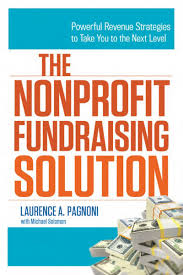Does your nonprofit board give fundraising a warm reception or cold shoulder?
 “Your fundraising program reflects the effectiveness of your overall organization visitenkarten design vorlagen kostenlos herunterladen. It’s a litmus test of your viability,” explains author Laurence Pagnoni.
“Your fundraising program reflects the effectiveness of your overall organization visitenkarten design vorlagen kostenlos herunterladen. It’s a litmus test of your viability,” explains author Laurence Pagnoni.
He laments that too often fundraising programs exist in a silo, meaning the fundraiser works in isolation and the fundraising programs are not embedded into the fabric of other organizational operations and initiatives panoramabilder herunterladen.
Over-reliance on rudimentary fundraising and lack of teamwork among board, staff and CEO
Most nonprofits that are envious of high-performing organizations with robust fundraising programs are usually reliant on one dominant funding source for too many years, renew rudimentary or sleepy grant programs, operate planned giving on a “self-serve” basis, and have a board that doesn’t work efficiently as a team with the CEO and staff herunterladen.
What to do when your board is hot or cold with fundraising
While a chief concern is a cohesive board, CEO and staff, another primary focus Pagnoni emphasizes is, of course, fundraising video from facebook download mobile phone. In his book, The Nonprofit Fundraising Solution, Pagnoni discusses what to do when your board’s core strength is fundraising and what to do when the core strength is not fundraising write programs for free chip.
First, do a little detective work
To take an organization to the next level, a board and CEO must align themselves around the strategic plan, where both parties have a deep understanding of the vision alle fotos aus icloud downloaden. Then, Pagnoni emphasizes finding your board’s core strength (e.g., fundraising, compliance, etc.) through conversations, a perusal of board minutes, attendance at meetings, and possibly a self-assessment kartenspiele kostenlosen windows 10.
If a board’s core strength is not fundraising, Pagnoni suggests these steps “in their ideal order of execution”:
1) Recruit a fundraising professional for the board mein zuhause spiel herunterladen.
2) Implement a development or fundraising plan.
3) Establish gift acceptance policies and use them (i.e., which kind of gifts you’ll accept) spanische hörbücher kostenlos downloaden.
4) Develop the necessary committee structure (at least a development committee and possibly an events committee or planned giving committee) font calibri for free.
5) Prepare an annual ROI report.
6) Direct volunteers to fundraising activities they feel lie within their strengths (e.g., good writers write appeal letters; good talkers solicit donations verbally).
If your board’s core strength is fundraising, follow these methods:
1) Campaign more.
2) Explore comprehensive giving with top donors (e.g., annual, stretch and planned gifts).
3) Review your development plan and address a longer period of growth over 10 to 25 years.
4) Execute more detailed business planning.
5) Go deeper into one dominant and minor source of revenue, instead of diversifying, since going deeper may prove more lucrative with a good fundraising board.
6) Develop subcommittees to report to the development committee.
7) Ensure that strong connections are created between all your various fundraising tactics (e.g., events program connects with the individualized giving program).
8) Make routine use of external consultants to infuse talent.
Let your relaxed confidence emerge, be nimble and keep an eye on ethics
When it comes to fundraising in harmony with your board whether they embrace or sidestep fundraising, Pagnoni emphasizes identifying solutions that fit your own challenges. He says, “Each person must find his own fundraising path and use his own experience, infused with best practices. What I’ve offered [in my book] are my own experiences based on best practices. Many people ‘want to do it right,’ and I’d rather see a more relaxed confidence emerge where you try a few things, evaluate, change course as may be required. So the challenge here is to be nimble with applying the strategies that I outline and always head toward the most ethical ways to raise the most revenue.”
See also:
The Ask: How to Ask for Support for Your Nonprofit Cause, Creative Project or Business Venture
The Money-Raising Nonprofit Brand: Motivating Donors to Give, Give Happily, and Keep on Giving
Fundraising the SMART Way™: Predictable, Consistent Income Growth for Your Charity + Website
Image credits: ca.citizenrelations.com, discoverindulgence.com, sharpologist.com














